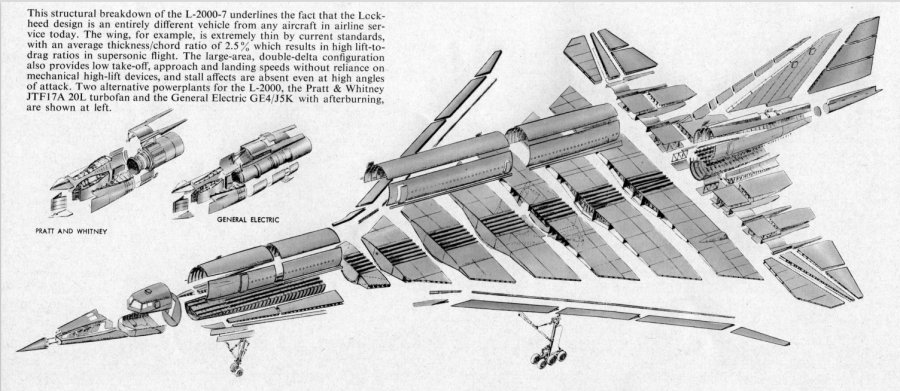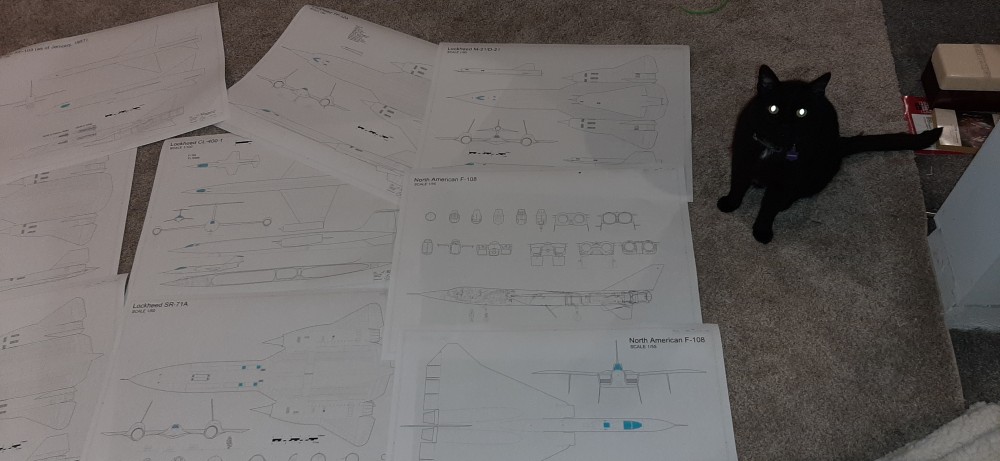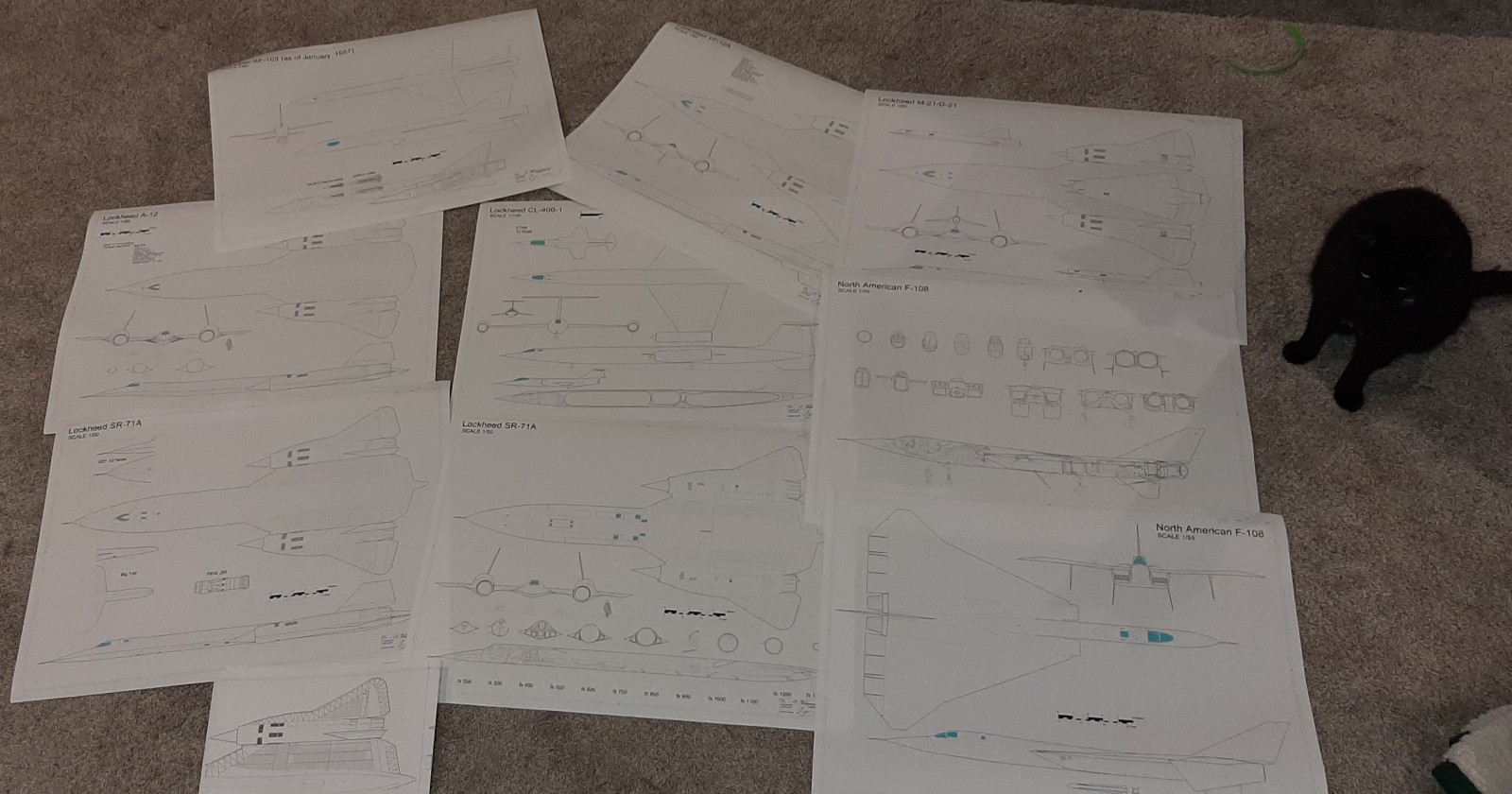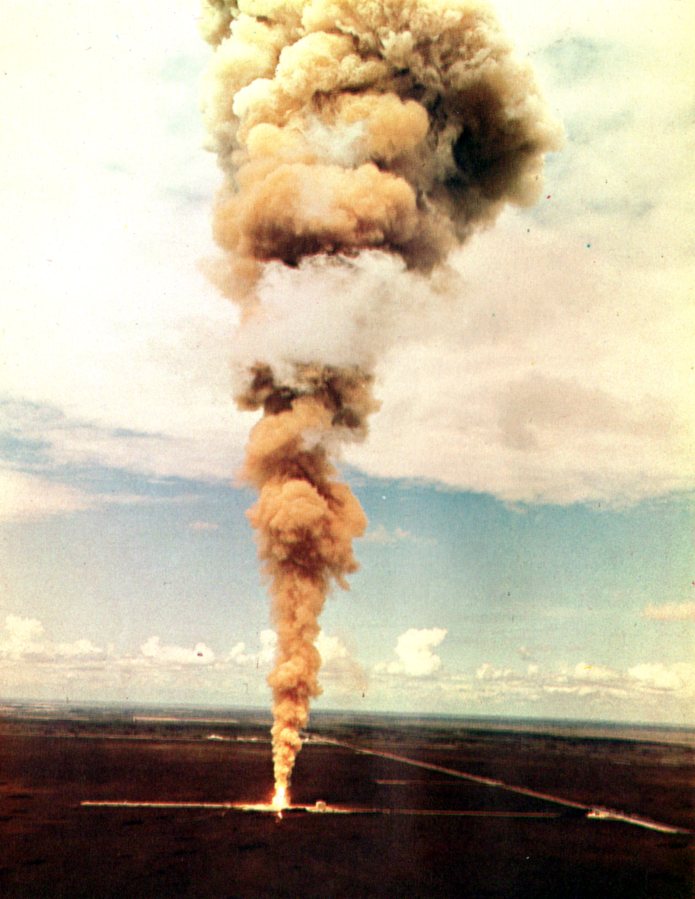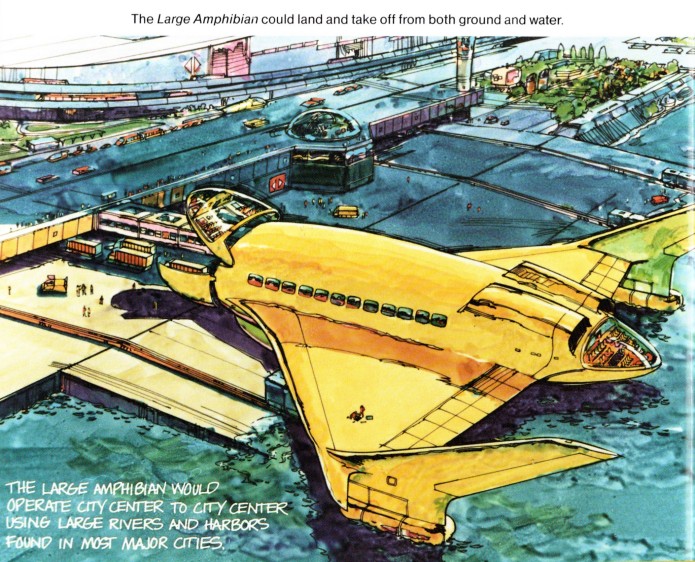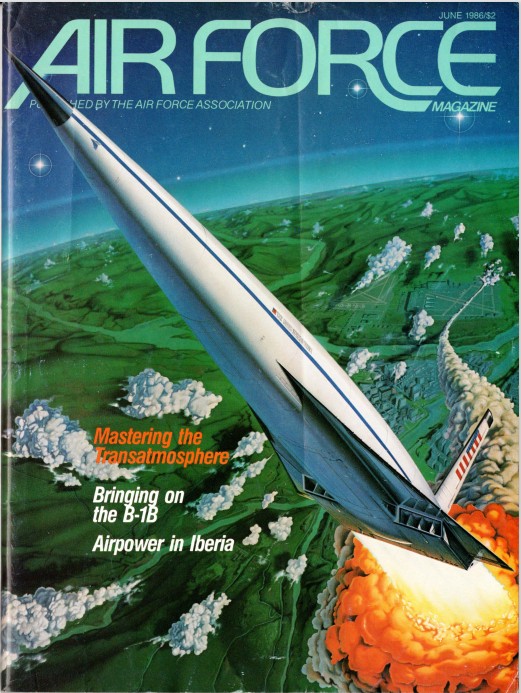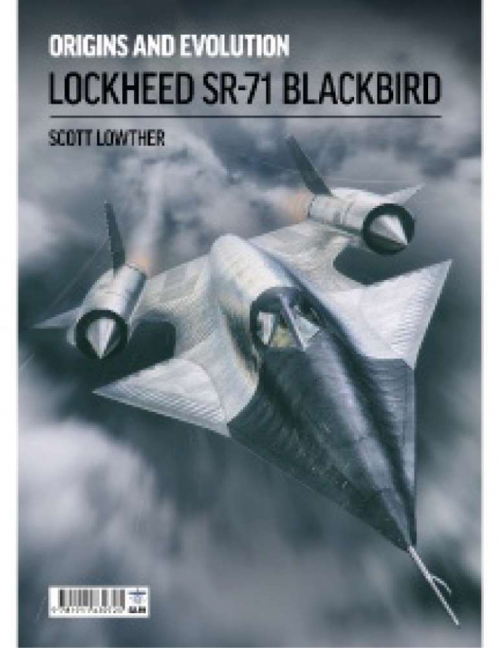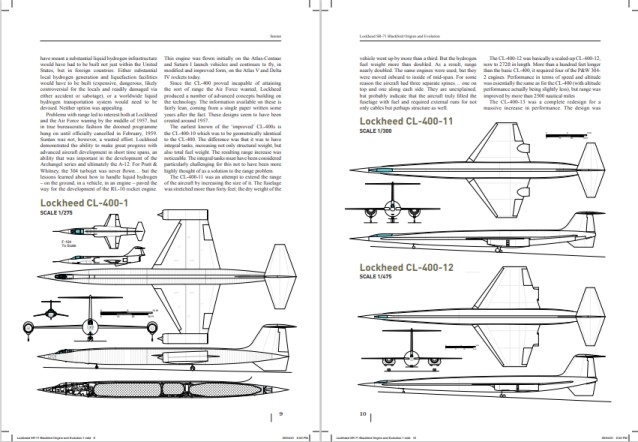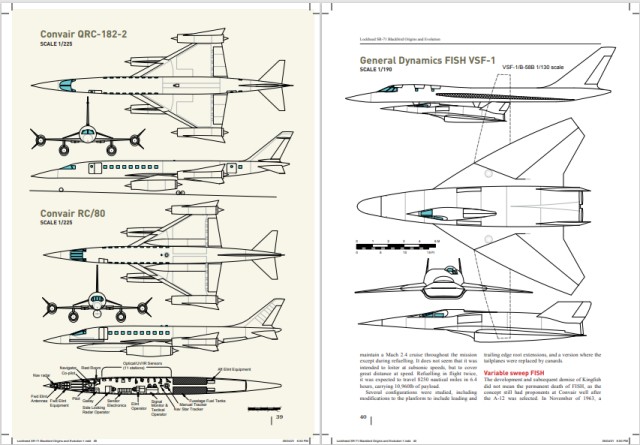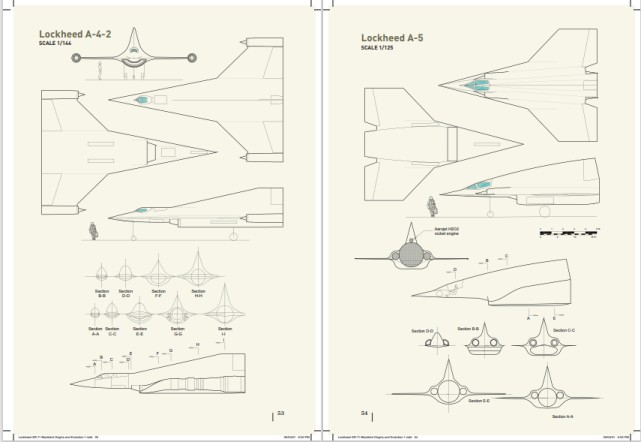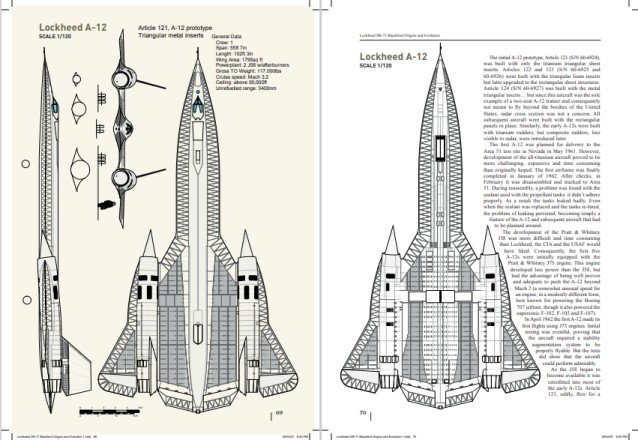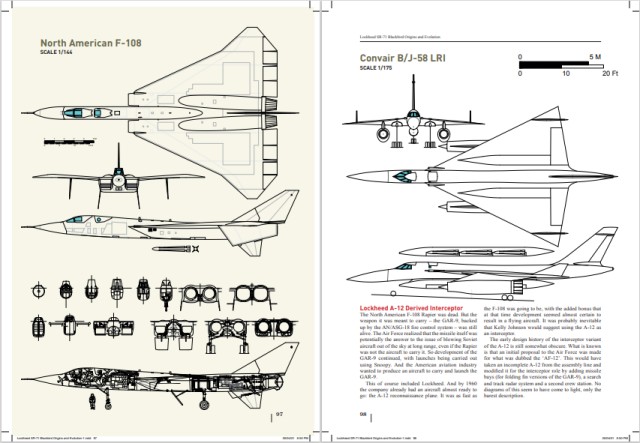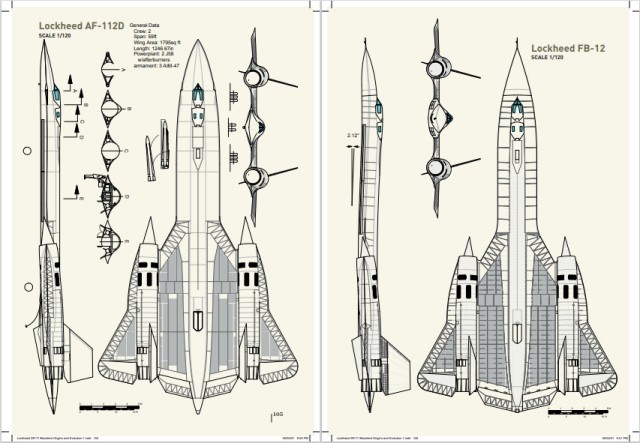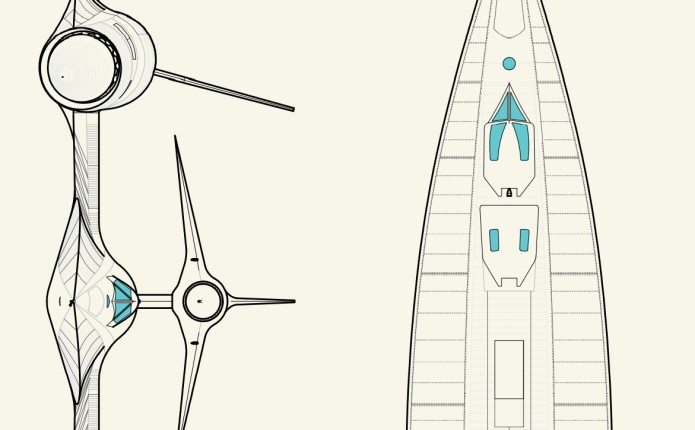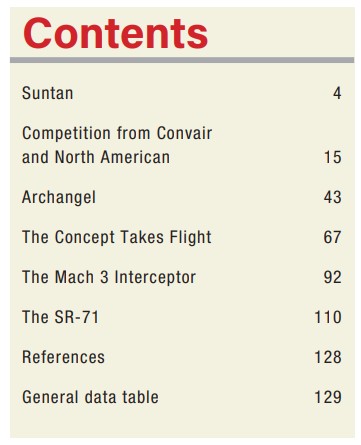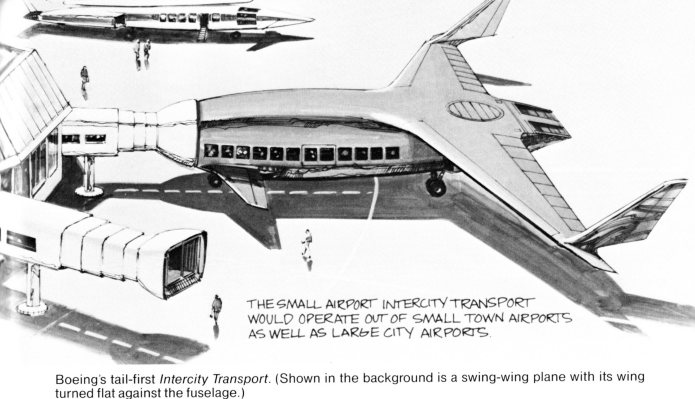An exploded view of the Lockheed L-2000 SST project from the 1960’s. This was the second-place finisher in the contest to develop a US supersonic transport, losing to the Boeing 2707. The 2707 won in part because it had variable-sweep wings, giving it better low speed performance… but after the contest was won, Boeing’s design shed the overly-heavy variable geometry for fixed wings not unlike those of the Lockheed design. In the end that couldn’t save the 2707 from the chopping block. Many have wondered over the last half-century what might have happened had Lockheed won the contract instead. Perhaps the sky would be filled with SSTs. Perhaps the L-2000 would have been a failure of historic proportions, with prototypes crashing or exploding in flight. Or perhaps it would have turned out just like the 2707… once detailed development began costs would have ballooned, performance suffered and Congress simply walked away.
The full article this came from has been scanned at 300 DPI (the image above was scanned at an additional, higher rez) and provided to all above-$10 subscribers and Patrons. If you would like to help fund the acquisition and preservation of such things, along with getting high quality scans for yourself, please consider signing on either for the APR Patreon or the APR Monthly Historical Documents Program.
0
